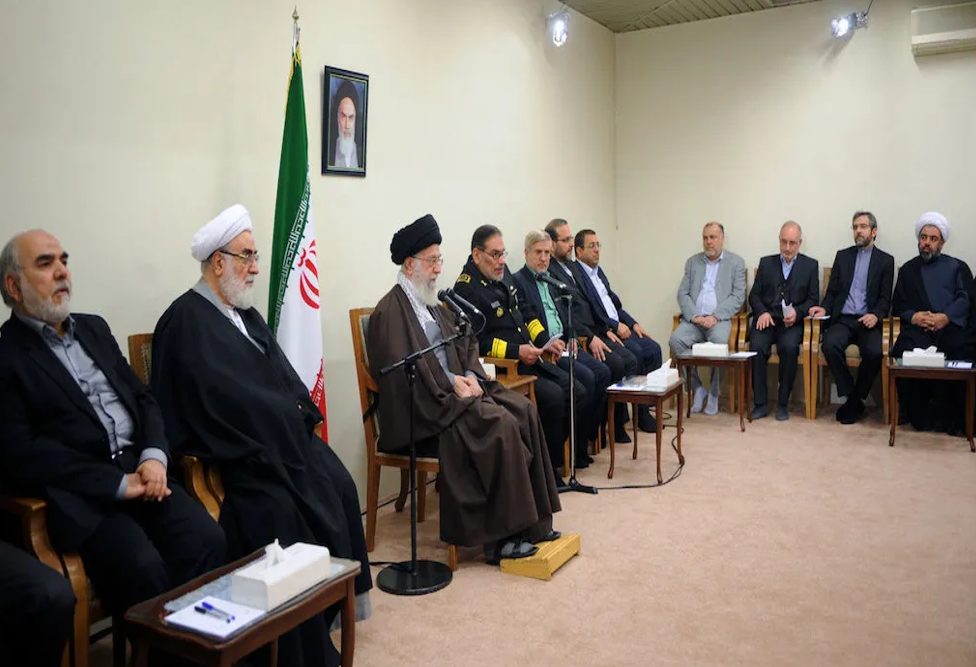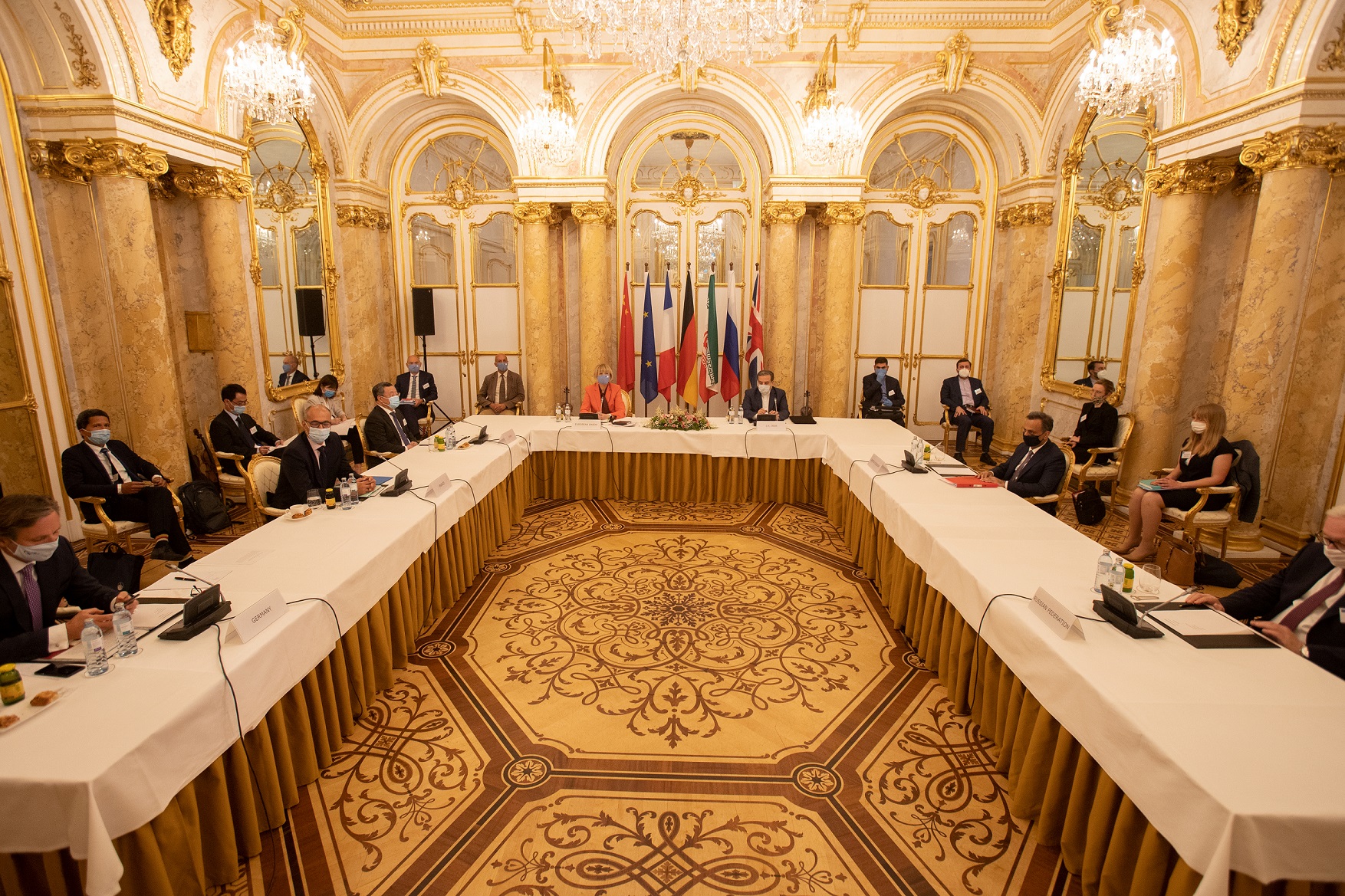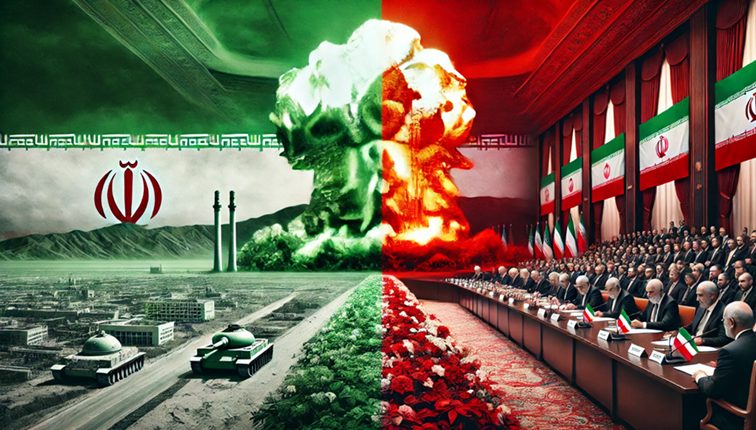Publications
INSS Insight No. 1949, February 19, 2025
As the renewal of nuclear talks approaches, the Iranian leadership faces an increasingly sharp dilemma over the strategy it should adopt regarding its nuclear program. On one side, figures from the “moderate” camp are urging Tehran’s leadership to take a conciliatory approach that would lead to a nuclear agreement with the United States in exchange for concessions on its uranium enrichment program. On the other side, voices within the “conservative” camp are growing louder, advocating for Iran to reconsider its nuclear strategy and move toward developing a bomb. The decision ultimately rests with Iran’s Supreme Leader Khamenei, and whatever path he chooses will have far-reaching consequences for the future of the regime in general and Tehran’s nuclear program in particular.
In recent weeks, two opposing developments have occurred in Iran, reflecting the acute dilemma of Tehran’s leadership over the future of its nuclear program. On the one hand, statements from conservative figures in the country suggest that Iran’s leadership is taking significant steps toward a potential shift in its nuclear strategy. According to a report in the New York Times, Iranian scientists have explored various options for rapidly acquiring a military nuclear capability should Iran’s leadership make such a decision. On the other hand, voices among Tehran’s leadership, particularly those identified with the “moderate” camp, are increasingly calling for concessions in the nuclear program as part of negotiations with the Trump administration. The administration has already stated its preference for an agreement over an Israeli military attack, thus paving the way for a potential deal that could lift sanctions and ease the economic burden on the Iranian people.
This debate is unfolding against the backdrop of Iran’s worsening economic crisis—one that began before President Trump took office and reinstated the “maximum pressure” campaign—and the unprecedented energy crisis that has struck the country. In addition, Iran faces a serious security challenge due to the collapse of the so-called “Axis of Resistance” network it had built as a result of the war with Israel and the severe blow caused by Israel’s attack on Iran’s missile production and air defense systems on October 26, 2024.
It appears that Iran’s Supreme Leader Khamenei has yet to decide which stance to adopt, and his public statements reflect this dilemma. While he has not ruled out negotiations with the United States, he has repeatedly expressed skepticism about their effectiveness and, most importantly, warned against making concessions to the US administration. In any case, it is clear that Khamenei strongly opposes direct engagement with those responsible for the assassination of his protégé, Qasem Soleimani, making it highly doubtful that he would agree to make major concessions in negotiations to meet international demands. These factors—along with the Iranian leadership’s anger over US sanctions, the return of the “maximum pressure” policy, and the possibility that Iran has already received a list of American demands that are far from its expectations—make the prospect of an agreement unlikely. Despite Tehran’s weakness (or perhaps because of it), Khamenei appears to be maintaining a tough stance. This position not only limits the chances of reaching an agreement—even if Iran agrees to renew negotiations for fear of the powers’ response should it attempt to abandon the diplomatic process.

One of the main sources of confusion within the Iranian leadership may be its struggle to understand Trump’s policy toward Iran. While Trump and his officials claim they have no desire to pursue regime change in Tehran and instead seek a nuclear agreement rather than a military strike (as suggested by Trump’s recent statement that an agreement would “save” an attack on Iran), their actions send mixed signals. Trump has imposed additional sanctions on Iran, and his stance on Iran’s nuclear program remains ambiguous. This, combined with Tehran’s deep-seated mistrust of US intentions, complicates the prospects of restarting negotiations and hardens Iran’s public position.
For its part, Tehran is attempting to exploit Trump’s reluctance to strike Iran and leverage his concerns that Iran might use its nuclear program to build a bomb. To this end, senior regime officials repeatedly emphasize Tehran’s lack of interest in developing nuclear weapons while expressing a willingness to discuss the issue with the administration and provide assurances on this matter. In practice, however, Tehran is working to remain on the nuclear threshold regarding uranium enrichment while allowing certain oversight mechanisms to “confirm” that its goal is not to build a bomb—all in an effort to lift sanctions without dismantling its existing enrichment infrastructure.
However, given that the chances of this approach succeeding with the Trump administration are low, Tehran faces significant dilemmas ahead of the potential renewal of nuclear talks. Iran’s leadership, particularly Supreme Leader Khamenei, must decide whether to engage in direct negotiations with the administration on the nuclear issue—an approach that would increase the chances of success but currently contradicts Khamenei’s directives. In addition, Tehran must contend with its aversion to the Trump administration, especially due to its role in Soleimani’s assassination and its withdrawal from the previous nuclear deal. It must also address mounting economic pressure resulting from the renewal of Trump’s “maximum pressure” policy and, most importantly, determine the limits of its concessions in negotiations. This is especially pressing given the likelihood that world powers will seek to include other issues in the talks, such as Iran’s support for Russia or its destabilizing activities in the Middle East. Conversely, if diplomatic efforts collapse, Iran’s supreme leader will have to make “strategic” decisions regarding whether to advance toward nuclear weapons, which includes enriching uranium to military levels and/or reestablishing its weapons group, especially if the likelihood of military escalation in the Gulf increases.
Above all, Iran’s main challenge is that it can no longer afford to “drag out” negotiations. In addition to its urgent need for sanctions relief, this time Iran and the world powers have a deadline: If an agreement—or a roadmap to one—is not reached, the E3 countries (France, Germany, and the United Kingdom) are likely to trigger the “snapback mechanism” in October, which would reinstate all sanctions on Tehran. If this occurs, Iran may follow through on its threats and take drastic steps in its nuclear program, such as withdrawing from the Non-Proliferation Treaty (NPT). This would significantly raise the risk of unprecedented international and/or Israeli actions against Iran’s nuclear program, especially without oversight from the International Atomic Energy Agency.

From Tehran’s perspective, the goal is to return to the terms of the previous nuclear agreement (as most of the restrictions imposed on Iran under that agreement have already been lifted or are set to be lifted soon) or to secure a new agreement focused on ensuring that Iran’s program is “for peaceful purposes only,” without requiring significant nuclear or other concessions. However, if the E3 and the United States attempt to exploit Tehran’s current weakness and demand a drastic dismantling of Iran’s uranium enrichment infrastructure—thereby distancing it from the 90% military enrichment threshold—or insist on including additional issues in the negotiations, Iran’s dilemma will intensify. Iran will then have to choose between making a dramatic nuclear concession, which would allow economic relief but significantly delay its ability to build a bomb in the future, or triggering the “snapback mechanism”—which would inevitably push Iran to take steps that raise concerns about its nuclear intentions, including possible progress toward a military pathway to a bomb.
Iran’s Supreme Leader Khamenei is nearing the end of his life. As he searches for a successor (following the death of former President Raisi) and continues to view the United States as the “Great Satan,” Khamenei will have to make a fateful decision that will shape the future of the Islamic Republic. While Khamenei has demonstrated “heroic flexibility” in the past, which led to the previous nuclear deal, it is highly doubtful that he would be the one to authorize a direct meeting between the Iranian and US presidents—let alone agree to unprecedented concessions on the nuclear program and other issues demanded by the world powers.
Only a dramatic concession from the United States, allowing Iran to remain on the nuclear threshold in exchange for tighter oversight, or an extraordinary willingness from Iran’s supreme leader to reverse its nuclear program due to a threat to the regime, could lead to a nuclear settlement within a reasonable timeframe. However, it seems highly unlikely that Khamenei is prepared for such concessions, making a clash between the parties more probable than a resolution—especially if Iran follows through on its threat to leave the NPT in response to the snapback mechanism.



